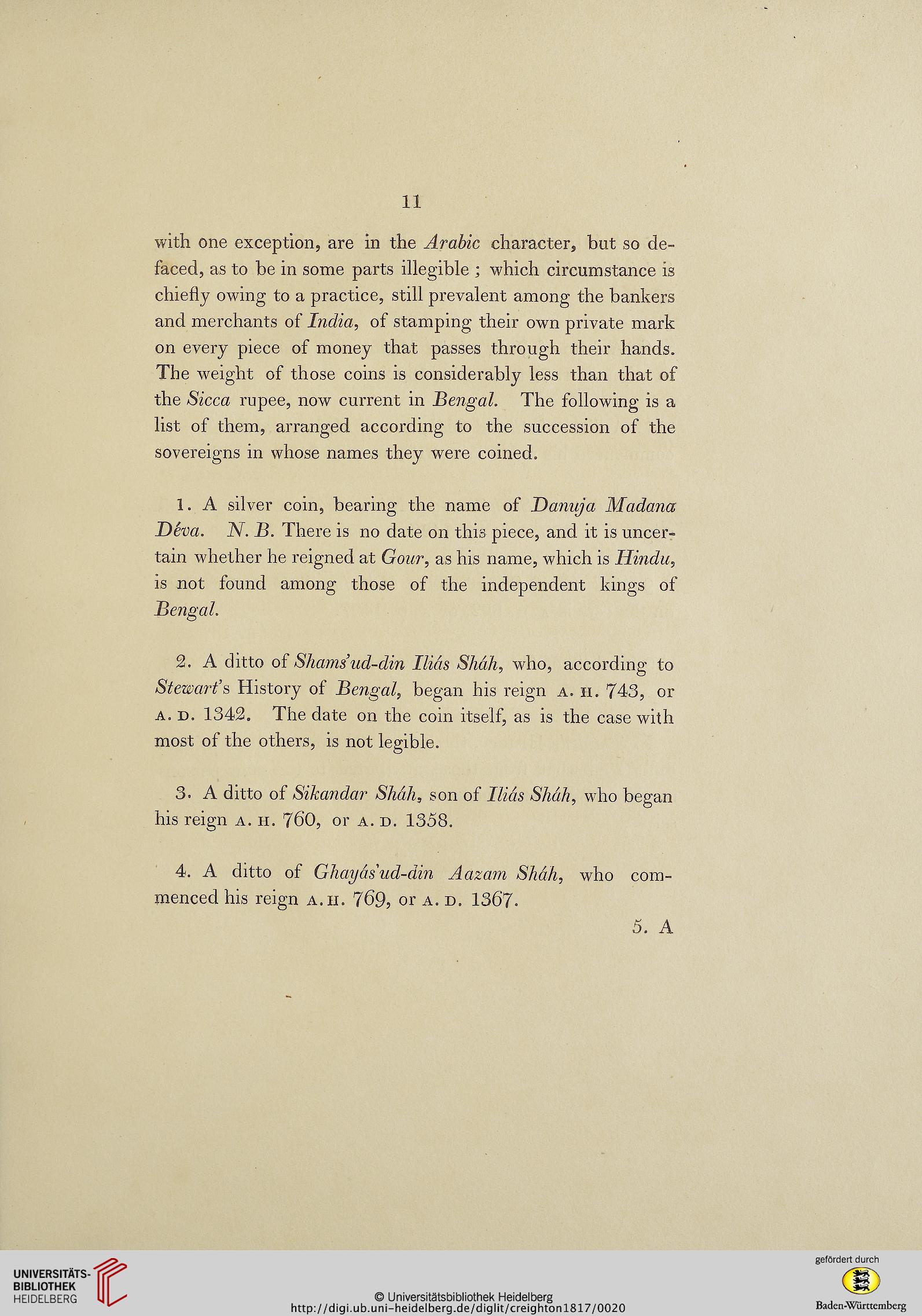11
with one exception, are in the Arabic character, but so de-
faced, as to be in some parts illegible ; which circumstance is
chiefly owing to a practice, still prevalent among the bankers
and merchants of India, of stamping their own private mark
on every piece of money that passes through their hands.
The weight of those coins is considerably less than that of
the Sicca rupee, now current in Bengal. The following is a
list of them, arranged according to the succession of the
sovereigns in whose names they were coined.
1. A silver coin, bearing the name of Danuja Madana
Deva. N. B. There is no date on this piece, and it is uncer-
tain whether he reigned at Gout, as his name, which is Hindu,
is not found among those of the independent kings of
Bengal.
2. A ditto of Shams’ud-din Ilids Shah, who, according to
Stewart’s History of Bengal, began his reign a. h. 743, or
a. d. 1342. The date on the coin itself, as is the case with
most of the others, is not legible.
3. A ditto of Sikandar Shah, son of Ilids Shah, who began
his reign a. h. 760, or a. d. 1358.
4. A ditto of Ghayasud-din Aazarn Shah, who com-
menced his reign a.ii. 769? or a. d. 1367.
5. A
with one exception, are in the Arabic character, but so de-
faced, as to be in some parts illegible ; which circumstance is
chiefly owing to a practice, still prevalent among the bankers
and merchants of India, of stamping their own private mark
on every piece of money that passes through their hands.
The weight of those coins is considerably less than that of
the Sicca rupee, now current in Bengal. The following is a
list of them, arranged according to the succession of the
sovereigns in whose names they were coined.
1. A silver coin, bearing the name of Danuja Madana
Deva. N. B. There is no date on this piece, and it is uncer-
tain whether he reigned at Gout, as his name, which is Hindu,
is not found among those of the independent kings of
Bengal.
2. A ditto of Shams’ud-din Ilids Shah, who, according to
Stewart’s History of Bengal, began his reign a. h. 743, or
a. d. 1342. The date on the coin itself, as is the case with
most of the others, is not legible.
3. A ditto of Sikandar Shah, son of Ilids Shah, who began
his reign a. h. 760, or a. d. 1358.
4. A ditto of Ghayasud-din Aazarn Shah, who com-
menced his reign a.ii. 769? or a. d. 1367.
5. A





